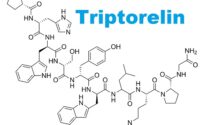Metribolone
 What is Metribolone?
What is Metribolone?
Methyltrienolione, commonly known by its brand name Metribolone, is an anabolic-androgenic steroid (AAS) of significant power and notoriety in both medical and athletic circles. However, its journey from a potential therapeutic agent to a substance enveloped in controversy is as complex as the molecular structure that defines it.
At its core, Methyltrienolone is a derivative of trenbolone, itself a powerful anabolic steroid, distinguished by the addition of a methyl group. This modification allows Metribolone to orally administer, a trait that sets it apart from many other steroids that require injection. But this convenience comes with a cost, as this structural alteration also makes Metribolone particularly hepatotoxic, or damaging to the liver. It is this characteristic that has largely confined its use to research settings, rather than seeing widespread adoption in clinical practice.
Most importantly
The allure of Methyltrienolone in athletic and bodybuilding contexts lies in its remarkable potency. It is considered one of the strongest steroids available, displaying an anabolic to androgenic ratio that far surpasses that of other commonly used AAS. This has made it a topic of great interest for those seeking to enhance physical performance, muscle mass, and strength. However, the risks associated with its use are equally potent, steering many away from experimenting with this potent chemical.
Methyltrienolone has never been approved for human use by any regulatory authority, a status that underscores the concern over its safety profile. The liver toxicity attributed to Metribolone is severe and can lead to life-threatening conditions, such as peliosis hepatis, a disease where blood-filled cysts replace liver and spleen tissue. Additionally, its androgenic effects can trigger a range of side effects, from virilization in women to the exacerbation of male pattern baldness and other androgenic effects in men.
Metribolone or Methyltrienolone
Capability of Methyltrienolone to bind to the androgen receptor is unparalleled, which theoretically could offer some therapeutic benefits, such as muscle wasting disease treatments. Notably, its interaction with the androgen receptor has piqued scientific interest, leading to its use as a reference compound in research studies investigating the androgen receptor’s function and the effects of other substances on androgenic pathways.
The use of Methyltrienolone has also raised ethical and legal concerns, particularly in the realm of competitive sports. Its detection in athletes can lead to disqualification and suspension, casting a shadow over careers and undermining the integrity of sporting competitions.
In conclusion, Metribolone is a compound of paradoxes – an extremely potent anabolic steroid that offers significant potential benefits, yet carries equally significant risks. Its journey from a hopeful therapeutic agent to a controversial and largely prohibited substance reflects the broader challenges and ethical considerations that come with the development and use of performance-enhancing drugs. While it remains a subject of scientific curiosity, the consensus within both the medical and athletic communities is clear: the dangers associated with Methyltrienolone far outweigh any potential gains, marking it as a compound more valuable for what it can teach us than for what it can do.
More info:


